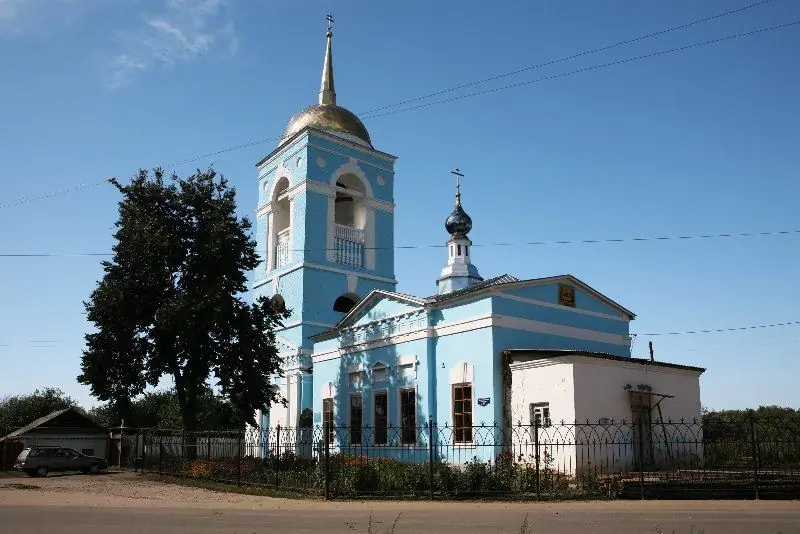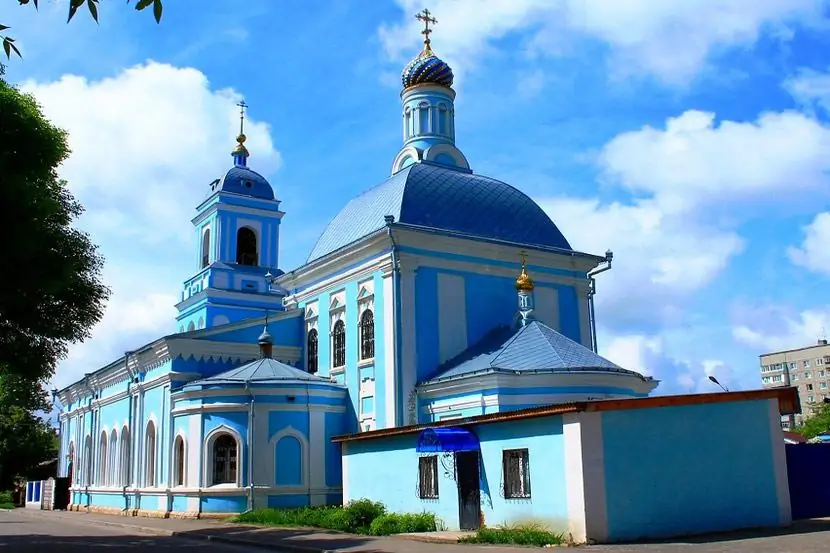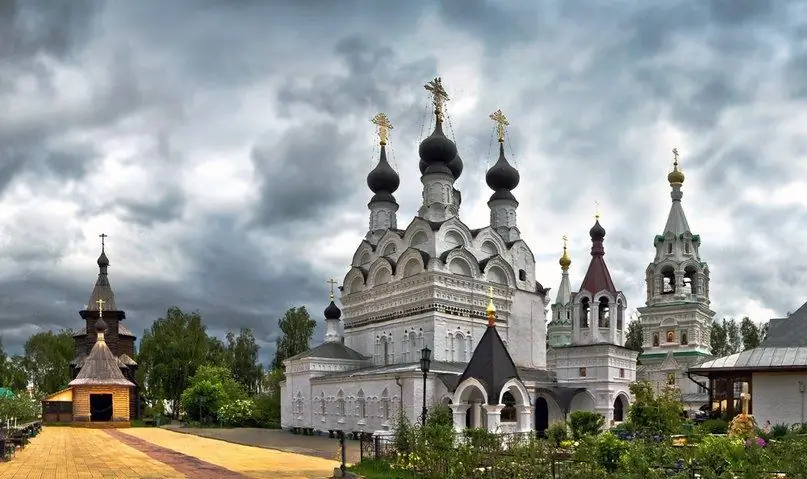- Author Miguel Ramacey [email protected].
- Public 2023-12-17 06:11.
- Last modified 2025-01-24 21:21.
Moore was founded in the 9th century. There are many architectural monuments here and, as in almost every ancient Russian city, there are many churches and monasteries. Murom and the most famous temples are described in this article.
History
Murom is located on the high bank of the Oka River. The first mention of the city is found in the very first Russian chronicle. For a long time Murom served as the eastern outpost of the Russian state.
At the beginning of the 11th century, the city became the object of an internecine war. In 1129 Yaroslav Svyatoslavovich took the princely throne. Approximately 70 years later, the city turned into the center of an independent diocese, which was later transferred to the old Ryazan.
In the 16th century, before going to Kazan, the troops of Ivan the Terrible stopped in Murom. The churches of this city have a long history. Some were built under Ivan IV. Very soon the tsar divided the Russian land into oprichnina and zemshchina. Murom joined the latter.
In the 17th century, handicrafts began to develop rapidly here. Skillful blacksmiths, shoemakers, tailors, jewelers and other craftsmen worked in Murom. Around this time, the glory of Murom rolls began to spread throughout Russia.
Monasteries and churches in Murom, as already mentioned, a lot. In Soviet times, most of the temples were destroyed. In the 90s of the last century, their restoration began. Monasteries of Murom:
- Annunciation.
- Resurrection.
- Holy Trinity.
- Ex altation of the Cross.
There are thirteen parish churches in Murom. Among them, the most famous are Nikolo-Embankment, Smolenskaya and Uspenskaya.
Nikolo Embankment Church
The temple is located on the picturesque bank of the Oka. Below, at the foot of the hill, a spring beats. There is a legend that Nikolai Ugodnik came to him more than once in the old days. There is also a chapel near the church.
This temple is mentioned for the first time in the sources of the second half of the 16th century. Then the church had two aisles. Initially, it was wooden, like most medieval buildings. In 1700, the construction of a stone temple finally began. Almost 100 years later, a refectory appeared here.
One of the most famous churches in Murom was closed in 1940. Within its walls for 10 years there was a poultry farm. Later, in 1960, the temple was transferred to the city museum. Restoration began in 1991.

Assumption Church in Murom
The temple was first mentioned in the documents of 1574. According to historical sources, the court of the Lord of Ryazan was located here at that time. In morelater documents speak of two wooden churches that supposedly were on this site.
In 1700 a stone church was built with donations from the merchant Lichonin. Forty years later, a bell tower was erected here. The church was closed in the 1920s. The temple was returned to believers only in 1997.

The Sretenskaya Church in Murom was built in 1795. It is located at the address: Karl Marx Street, 55. The Trinity Church appeared in this city in 1828. This temple is located on Krasina street. The list of churches in Murom given above is incomplete. After all, there are still temples that are located on the territory of monasteries. It is also worth briefly talking about the Murom monasteries.

Annunciation Monastery
The monastery arose on the site of the wooden church of the Blessed Virgin Mary. According to legend, it was built by order of Prince Konstantin Svyatoslavovich, the youngest son of Svyatoslav Yaroslavich.
Officially, the year of foundation is 1553. Moreover, this monastery appeared in Murom by no means thanks to Prince Konstantin Svyatoslavovich.
In the fifties of the 16th century, by order of the tsar, a huge number of churches and monasteries were built in Moscow and beyond. In Murom, the formidable ruler also ordered the construction of a monastery, which today is one of the main local attractions. By the way, her story includes quite a few sad events. Already 70 years after the completion of the construction, the Poles plundered the monastery.
For severalFor decades, local residents have been restoring the monastery. In 1654, thanks to one of the Murom merchants, a bell clock appeared here. At the end of the 18th century, a religious school was opened on the territory of the monastery, but soon a fire broke out, which destroyed several buildings. The school was moved to another place, and closed in 1800.
In the 20th century, the monastery shared the fate of many Orthodox churches. In 1919 it was closed. The brethren moved to the city, where the monks continued to serve in the cathedral.

Resurrection Monastery
The nunnery is located in the north-eastern part of the city. There is a legend according to which the monastery was built where the country palace of Prince Peter and Princess Fevronia used to be.
For the first time the monastery is mentioned in the documents of the 16th century. A part of the architectural complex dating back to the 17th century, including the Church of the Resurrection, has survived to this day.
In Murom, several monasteries were closed during the reign of Catherine II. During this period, a law was passed on the secularization of church lands. Resurrection was also closed. The temples that were located on its territory became parish. After the revolution they were closed.
Restoration of the monasteries and churches of Murom began after the collapse of the USSR. In 1998, the churches located on the territory of the Resurrection Monastery were returned to the Vladimir-Suzdal diocese.






